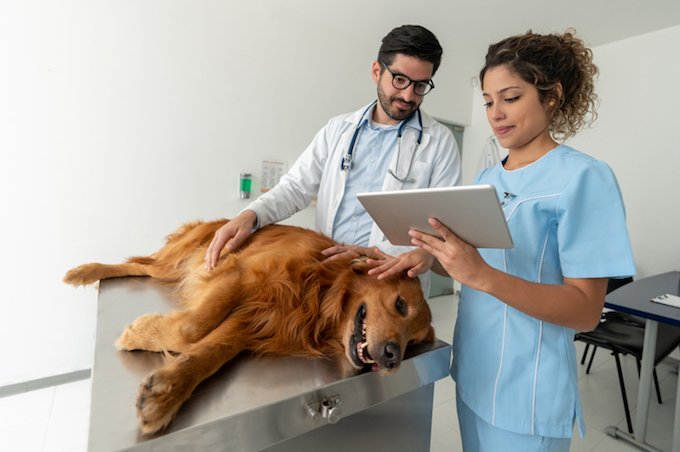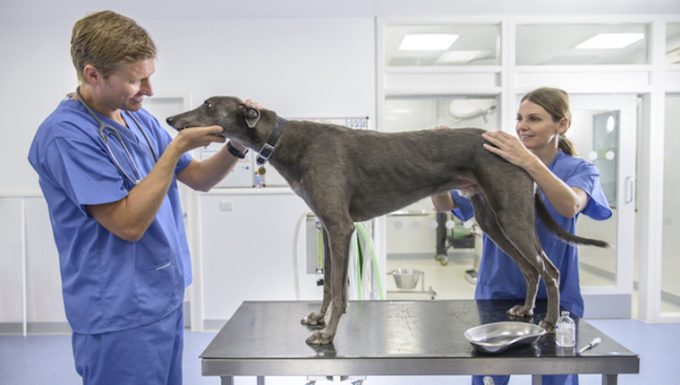Overproduction of estrogen in dogs happens when a dog produces too much of the hormone estrogen. The condition can cause infections and infertility.
Usually, the cause of the condition is either a natural hormone imbalance or a dog being artificially given estrogen. The condition can affect both male and female dogs.
Technically, the condition is also known as hyperestrogenism in dogs.
If you see the signs of the condition in your dog, then get to a veterinarian for a proper diagnosis and treatment.
Here’s what you should know about the symptoms, causes, and treatments for the condition.
Symptoms of Overproduction of Estrogen in Dogs
The condition produces a very wide range of symptoms. For example, some of the most common symptoms include:
- Fever
- Hair thinning
- Hair loss
- Pee with blood in it
- Gums turning pale
- Weakness
- Infections
- Bleeding from the vulva
- Prolonged estrus (females)
- Enlarged teats (females)
- Testicular masses (males)
- Infertility
- Increased or deceased attraction to the opposite sex
Causes of Overproduction of Estrogen in Dogs

The cause of the condition can be a number of things. For instance, some of the most common causes include:
- Hormonal imbalance
- Estrogen supplements
- Tumors
- Ovarian cysts
Treatments for Overproduction of Estrogen in Dogs
Firstly, your vet will ask about your dog’s symptoms. Secondly, your vet will ask about your dog’s full medical history.
Thirdly, your vet will carry out a full physical examination. Blood and urine tests will be taken. The subsequent results can help to diagnose the condition.
Additionally, your vet can use X-rays and ultrasounds to examine the condition of your dog’s abdomen. Also, a skin biopsy can be used to confirm the condition in cases involving hair loss.
Generally, treatment will depend on the underlying cause of the condition. For example, if your dog’s hormone supplements are causing the condition, your vet will recommend stopping the supplements.
Additionally, antibiotics will be prescribed for any cases involving an infection. As always, if your vet prescribes your dog any medicine, make sure to stick to the correct dose and frequency instructions. Also, complete the full course of medicine.
Ultimately, many cases are treated by surgical spaying or neutering. This is to help normalize your dog’s sexual hormones.
Generally, you will need to show a lot of patience while your dog recovers. This is because hormonal changes can be a delicate process for your dog to get used to.
Have you ever cared for a dog who suffered from this condition? How did your vet help your dog recover? Let us know in the comments section below.





